Page path:
- Home
- Research
- Expeditions
- 2016
- M126
FS METEOR M126
BIGMAR - Hydrothermal vents on the Mid-Atlantic Ridge
Interdisciplinary biological, chemical and geological studies at hydrothermal vent fields on the Mid-Atlantic Ridge
- April 19 - May 21, 2016
- Fortaleza (Brazil) - Bridgetown (Barbados)
- Study area between 12° N and 15°N
- ROV QUEST
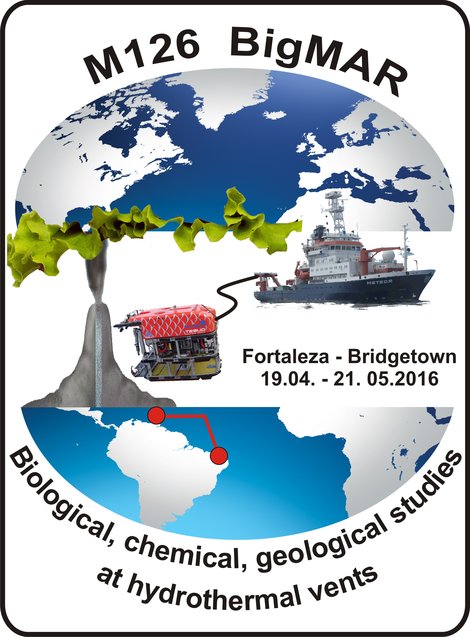
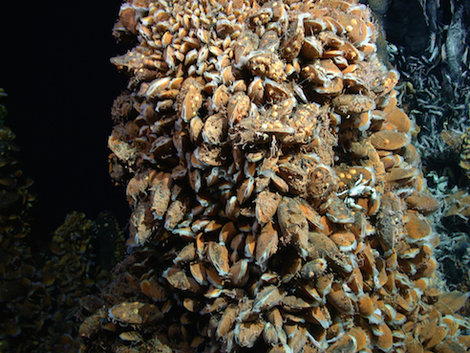
Chief scientist: Prof. Dr. Nicole Dubilier
What's up on board? Watch our blog (in German).
Research questions
The goal of this cruise is to better understand the links between geophysical, geochemical and biological processes at hydrothermal vents.
- What are the local controls on hydrothermal venting and the biological communities?
- What are the dominant geofuels in the vent fluids and plume, and how do these in-fluence the composition and distribution of the microbial communities?
- How do viruses affect the biogeochemistry and ecology of hydrothermal vents?
Our main working platform during the 23 working days will be the Remotely Operated Vehicle (ROV) QUEST from Marum, Bremen.
- What are the local controls on hydrothermal venting and the biological communities?
- What are the dominant geofuels in the vent fluids and plume, and how do these in-fluence the composition and distribution of the microbial communities?
- How do viruses affect the biogeochemistry and ecology of hydrothermal vents?
Our main working platform during the 23 working days will be the Remotely Operated Vehicle (ROV) QUEST from Marum, Bremen.
Working area
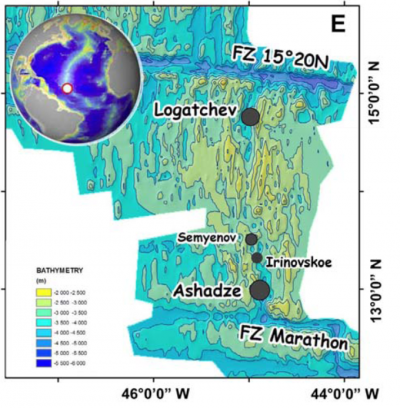
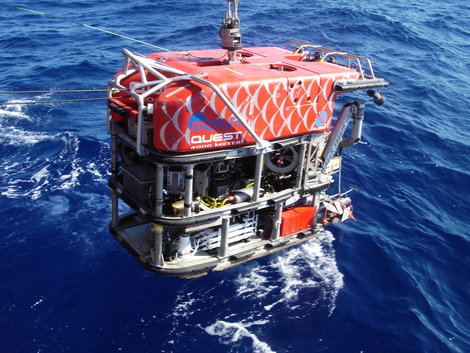
Neuigkeiten von Bord! Die Wochenberichte der Fahrtleiterin
1. Bericht vom 24. April
2. Bericht vom 1. Mai
3. Bericht vom 8. Mai
4. Bericht vom 18. Mai
1. Bericht vom 24. April
2. Bericht vom 1. Mai
3. Bericht vom 8. Mai
4. Bericht vom 18. Mai
Participating Institutes
- Max Planck Institute for Marine Microbiology, Bremen, Germany
- MARUM, University of Bremen, Germany
- Christian-Albrechts-University of Kiel, Germany
- Ohio State University, Columbus, USA
- Harvard University, Boston, USA
- Memorial University New Foundland, Canada
- University of Bergen, Norway
- University of Georgia, Athens, USA
The working area of cruise M 126 with the four hydrothermal vent fields Logatchev, Semenov, Irinovskoe and Ashadze (modified from Ondréas et al., 2012).
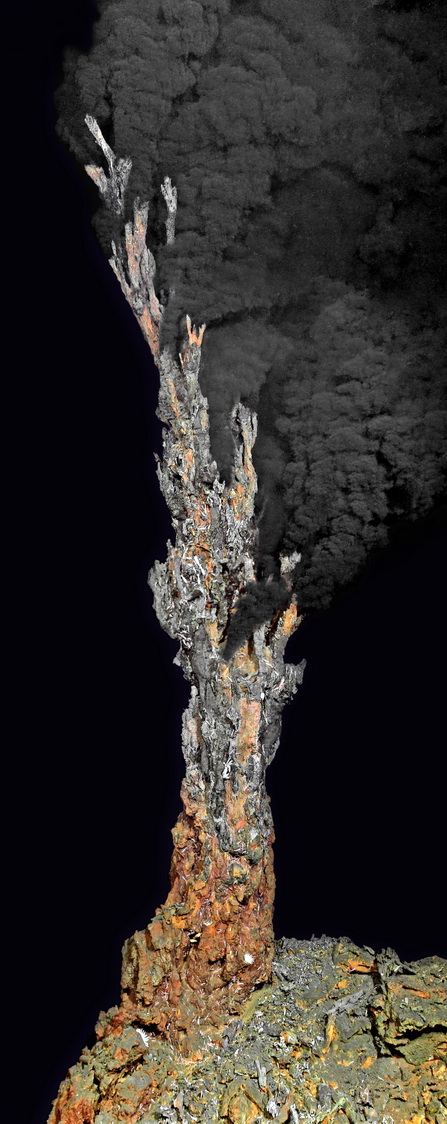
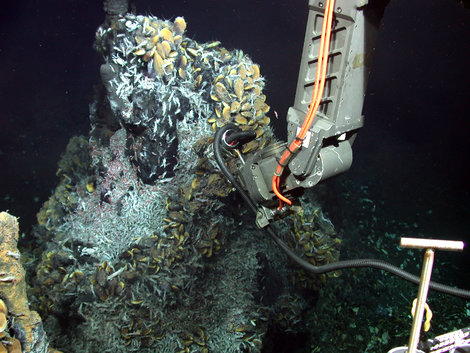
Impressions from the Logatchev hydrothermal field.
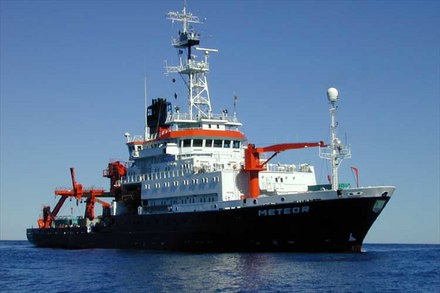
RV Meteor.
The goal of this cruise is to understand the links between geophysical, geochemical and biological processes at hydrothermal vents, one of the central aims of Project GB4 in the research Area Geosphere-Biosphere Interactions at MARUM. We will visit four hydrothermal vent fields located on the Mid-Atlantic Ridge: Logatchev, Semenov, Irinovskoe and Ashadze. Our research will focus on the following three questions:
1) What are the local controls on hydrothermal venting and the biological communities?
The four hydrothermal vent fields represent a broad spectrum of seafloor tectonics and basement rock composition. Hot and diffuse hydrothermal fluids are affected by the different basement rock compositions and architectures as well as by different physical factors such as temperature and pressure. The composition and distribution of hot and diffuse fluids determine the energy landscape of the associated ecosystems, and is thus a key factor controlling the diversity and distribution of the fauna living at vents.
Our goal is to better understand the relationships between the geology, chemistry and biology of vents by combining mapping of geological structures and biological communities with in situ mass spectrometry measurements of fluid composition.
2) What are the dominant geofuels in the vent fluids and plume, and how do these influence the composition and distribution of the microbial communities?
We search for a predictable relationship between the most abundant type of geofuel and the metabolism of the dominant primary producers at vents. As the vent fluids move from the subsurface to the seafloor and further into the hydrothermal vent plume, their concentration and relative changes. The subsurface is dominated by high concentrations of geofuels and anoxic conditions, while the surface and plume contain lower concentrations of geofuels but thermodynamically more favorable electron acceptors such as oxygen and nitrate. It is generally recognized that these changes in geochemical conditions affect the composition of the microbial community. However, detailed and comparative analyses of the chemical and biological composition of vent fluids from the subsurface, surface, and plume are lacking to date.
3) How do viruses affect the biogeochemistry and ecology of hydrothermal vents?
Viral particles are abundant at hydrothermal vents. Thus, it is assumed that they play a critical role in these deep-sea ecosystems. Recent findings show that viruses that infect chemoautotrophic sulfur-oxidizing bacteria encode key sulfur cycling genes. These findings support the assumption that viruses modulate microbial pathways for gaining energy from vent fluids and can benefit their host cells.
We will examine how the viral communities of both free-living and symbiotic vent microbes affect the metabolism and ecology of vent microbiota.
1) What are the local controls on hydrothermal venting and the biological communities?
The four hydrothermal vent fields represent a broad spectrum of seafloor tectonics and basement rock composition. Hot and diffuse hydrothermal fluids are affected by the different basement rock compositions and architectures as well as by different physical factors such as temperature and pressure. The composition and distribution of hot and diffuse fluids determine the energy landscape of the associated ecosystems, and is thus a key factor controlling the diversity and distribution of the fauna living at vents.
Our goal is to better understand the relationships between the geology, chemistry and biology of vents by combining mapping of geological structures and biological communities with in situ mass spectrometry measurements of fluid composition.
2) What are the dominant geofuels in the vent fluids and plume, and how do these influence the composition and distribution of the microbial communities?
We search for a predictable relationship between the most abundant type of geofuel and the metabolism of the dominant primary producers at vents. As the vent fluids move from the subsurface to the seafloor and further into the hydrothermal vent plume, their concentration and relative changes. The subsurface is dominated by high concentrations of geofuels and anoxic conditions, while the surface and plume contain lower concentrations of geofuels but thermodynamically more favorable electron acceptors such as oxygen and nitrate. It is generally recognized that these changes in geochemical conditions affect the composition of the microbial community. However, detailed and comparative analyses of the chemical and biological composition of vent fluids from the subsurface, surface, and plume are lacking to date.
3) How do viruses affect the biogeochemistry and ecology of hydrothermal vents?
Viral particles are abundant at hydrothermal vents. Thus, it is assumed that they play a critical role in these deep-sea ecosystems. Recent findings show that viruses that infect chemoautotrophic sulfur-oxidizing bacteria encode key sulfur cycling genes. These findings support the assumption that viruses modulate microbial pathways for gaining energy from vent fluids and can benefit their host cells.
We will examine how the viral communities of both free-living and symbiotic vent microbes affect the metabolism and ecology of vent microbiota.


